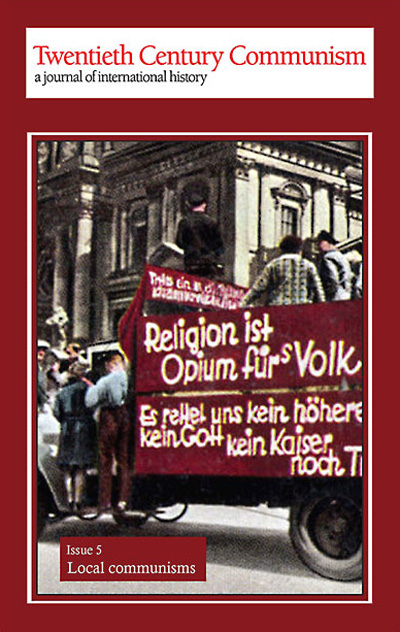
Bastions, black spots and other variations: in and beyond the specificities of the Little Moscow
Twentieth Century Communism - Print ISSN 1758-6437 - Online ISSN 2978-1329
Volume 2013 Number 5
Bastions, black spots and other variations: in and beyond the specificities of the Little Moscow
Kevin Morgan
Abstract
Drawing on the British and other European literature, this paper considers how the phenomenon of local communisms may most usefully be conceptualised by the comparative historian. Interpreting the notion ‘little Moscow’ as connoting both scale and exceptionality, it argues that the combination of social typicality and political atypicality poses specific methodological challenges which require the careful specification of those feature of these societies which were also atypical. As well as variations by place it suggests that strongly marked variations over time are crucial to the understanding of the political dimension of the little Moscow. Local communisms matter both as a recognition of the importance of place in the making of social and political movements and as a register of those differences of scale and level of activity which in an older communist historiography were largely disregarded. Nevertheless, a comparative perspective on local communisms must also recognise that these were only one expression of the highly differentiated patterns of communist implantation, and that depending time on time and place they were not necessarily the most important one.
To cite this article
Kevin Morgan (2013) Bastions, black spots and other variations: in and beyond the specificities of the Little Moscow, Twentieth Century Communism, 2013(5)
